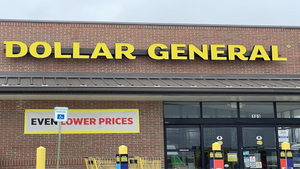Mind Your P/E Q'sMind Your P/E Q's
When it comes to marketing spending, small changes over time can equate to significant shifts. When it comes to marketing spending, small changes over time can equate to significant shifts, even for mindful manufacturers.
December 6, 2019

“Mind your P's and Q's” is an expression many of us heard while growing up when being reminded to mind our manners, be on our best behavior or watch what we were doing. These interpretations all reflect good approaches on how to manage business as well. And when it comes to marketing spending, minding your P/E Q's for your business will help you watch what you’re doing and will result in a business that is performing on its best behavior.
Small changes over time can equate to significant shifts. Similarly, making a large change over a short duration can also result in a major swing. Both points are evidenced in our 2020 Marketing Spending Study. Manufacturers have been making small shifts in annual spending, and the accumulated changes over a five-year period are substantial. Concurrently, the rate of change occurring in the consumer goods retail industry continues at an accelerated pace. Are manufacturers able to keep up with the accelerated pace of change in the industry? And if they are acting with the necessary degree of flexibility, how are their spending changes impacting their price/equity quotient?
What’s a P/E Q and Why It’s Important
Simply stated, the price/equity quotient compares the percent of marketing spending on pure price elements to the percent of spending on pure equity building elements. It’s a new metric we developed from our 2020 Marketing Spending Study, which enables manufacturers to capture their overall spending behaviors and track them over time, and importantly evaluate their spending against their strategic intent. When we used the metric to assess current marketing spending compared to spending allocations in 2014, we found that the P/E Q had shifted significantly over five years, from a 0.66 to 1.06, meaning there is a much greater focus on price.
There is no “good” or “bad” P/E Q. It depends upon the goals of the brand, the category and the company. Importantly, are the current spending allocations working for your business? Once the objectives of the business have been determined, the P/E Q provides a means to measure and track spending to determine if the spending principles deliver on the goals. If they do not, then the tool allows you to determine which levers are off balance and can help you decide how and where to reallocate funding. The P/E Q can be used at various levels of business analysis, at a corporate level, or for a brand at a retailer level—or anywhere in between. The P/E Q can serve as an excellent planning tool for both manufacturers and retailers.
Drivers of the P/E Q Shift From 2014 Through Today
With overall marketing spending pegged at nearly $225 million across the CPG landscape, it’s important to know how best to invest your next dollar. As the change in P/E Q from 0.66 to 1.06 indicates, a central finding from the 2020 Marketing Spending Study is that the amount of spending on price now exceeds the investment in brand equity. So where are those shifts taking place?
Digital continues its growth and is now the second-largest spending component at 22.8%.
Shopper marketing first plateaued, and then plummeted to 9.2%, returning to nearly 2012 levels.
Consumer promotion fell to its lowest point, 7.3%.
Traditional advertising, once a mainstay, continues to decline, now 12.7%.
Trade promotion remains the primary type of marketing spending, 46.1%, nearly half of the total.
While a portion of the growing digital spend helps to bolster the equity side of the equation, trade promotion, as the primary spending bucket, has a large influence on the overall P/E Q. Trade promotion is typically about driving immediate volume and less about building equity. This became even more prominent as price (temporary price reductions and ongoing price management) made a huge leap, now representing 62.6% of the trade budget. Display and feature and display support has fallen precipitously, from 45.4% of the budget in 2014 to only 19.7%.
Interestingly, while feature and display declined in spending, it gained in importance among retailers, now tied with ongoing price management, with 93% of retailers claiming both elements to be effective/very effective in generating sales. Temporary price reductions, on the other hand, were deemed effective/very effective by 71% of retailers, which may mean there is an opportunity to refocus some funding toward feature and display events.
What’s Next?
Allocating your marketing spending dollars each year is a challenging exercise. The price/equity quotient can help capture and track spending more easily, by collapsing the spending across multiple areas into two key components: price and equity. While there is no good or bad P/E Q, having a goal and direction is critical. What is the balance between price and brand equity spending today, and where do you want it to be?
Minding your P/E Q’s can help your business to be on its best behavior—and minding our manners is never a bad thing.
Karen Strauss is a principal with Cadent Consulting Group and can be reached at [email protected].
About the Author
You May Also Like




